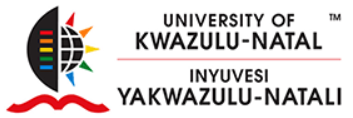Genital inflammation reduces efficacy of Tenofovir Gel: study sheds new light on why topical PrEP effectiveness varies in women
Why do some women get HIV infection, even though they are using tenofovir gel for prophylaxis? A new study by scientists at the Centre for the AIDS Programme of Research in South Africa (Caprisa), published in Nature Medicine recently, shows that genital inflammation significantly reduces the effectiveness of tenofovir gel in preventing HIV infection in women.
These findings indicate that both genital inflammation and adherence need to be addressed to improve the effectiveness of topical pre-exposure prophylaxis strategies for HIV prevention in women.
The researchers measured small proteins, known as cytokines, in the vagina. Raised cytokines levels in the vagina indicate the presence of inflammatory immune responses, even in the absence of clinical symptoms.
In this study, HIV infection rates and cytokine levels as a marker of genital inflammation were studied longitudinally in 774 women over a two-and-a-half year period.
Lead authors of the study, Dr Lyle McKinnon and Dr Lenine Liebenberg, found that women with genital inflammation were at higher risk of subsequently contracting HIV compared to women without inflammation. The study further showed that tenofovir gel provided 57% protection against HIV acquisition in women who had no evidence of vaginal inflammation but provided no protection in women with genital inflammation, even if they used the gel consistently.
"This study gives us an important clue to enhance HIV prevention in women. It is not only adherence-related behaviours, but also biological processes in the vagina that need to be addressed to prevent HIV and enhance the effectiveness of topical PrEP," said Professor Salim Abdool Karim, Director of Caprisa and Pro Vice-Chancellor of Research at UKZN.
In this study, nine pro-inflammatory cytokines were measured in specimens collected at over 2 139 clinic visits by 774 women at a rural and urban clinic in KwaZulu-Natal, South Africa to define the levels of genital inflammation.
In women who had no genital inflammation, women assigned to tenofovir gel had a HIV incidence rate of 2.3 per 100 person-years (95% CI: 1.0-4.4) compared to 5.4 per 100 person-years (95% CI: 3.4-8.2) in women assigned to placebo gel.
Conversely, in women with genital inflammation, the HIV incidence rate in those assigned to tenofovir gel was 6.8 per 100 person-years (95% CI: 3.8-11.1) compared to 7.0 per 100 person-years (95% CI: 3.7-11.9) in women assigned to placebo gel.
The study found that among women who used the gel most of the time (> 50% of sex acts), tenofovir gel was 75% protective (95% CI 25-92%, P = 0.014) in those women who had no genital inflammation as compared to no protection (-10%; 95% CI -184-57%, P = 0.844) in women with evidence of genital inflammation.
In 2010, the Caprisa 004 trial provided the first evidence that tenofovir can prevent sexual transmission of HIV.
Tenofovir gel reduced HIV acquisition by 39% overall. Two subsequent studies found that tenofovir gel was not effective, most likely because most of the women in the trials did not use the gel consistently. A sub-group analysis of the FACTS001 and the MTN 003 trials showed that the gel was just over 50% effective in consistent users, highlighting the importance of high adherence.
The new evidence emerging from this genital inflammation study indicates that there may be a biological basis for the differing results as well. The causes of genital inflammation are not well understood at present. Previous studies have shown that there are many possible causes of genital inflammation in women, including imbalances in the bacteria of the vaginal microbiome, sexually transmitted infections and vaginal practices.
Commenting on the study, Dr Jo-Ann Passmore, Head of the Caprisa mucosal immunology laboratory and a professor at the University of Cape Town, said: "Genital inflammation, which is present in up to a third of women, makes it harder to protect women from HIV infection." She said that, "...the next step is to expand our results to assess how genital inflammation might affect the efficacy in HIV prevention trials of vaccines, passive immunisation with antibodies and antiretroviral PrEP administered through pills, rings and implants."
Dr Passmore is the Principal Investigator of this research, which was funded by the US National Institutes of Health. The original Caprisa 004 study was funded by The US Agency for International Development and was conducted by Caprisa in partnership with FHI360, CONRAD and Gilead Sciences.
According to Dr Mckinnon, who is also a researcher at the University of Manitoba: "Reducing inflammation of the genital tract in women may augment the HIV prevention in women."
"The study highlights the major role of genital inflammation in HIV risk and in modifying the efficacy of HIV prevention strategies," said Dr Liebenberg. "Current and future attempts to improve topical PrEP efficacy would benefit from knowing the causes of inflammation, and developing new strategies to treat genital inflammation."
One such effort is currently underway at the University of Manitoba, where a study is being led by Dr Keith Fowke to use the anti-inflammatory, Acetylsalicylic acid (known commonly as aspirin), to reduce inflammatory responses in the female genital tract. (ClinicalTrials.gov: NCT02079077).
Access the scientific paper at: http://dx.doi.org/10.1038/nm.4506.
